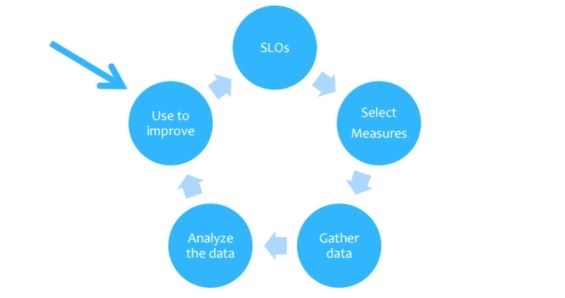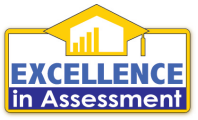External Resources
This page is being retained for archival purposes but is no longer being maintained. Please navigate other pages of the site for current resources.
Nine Principles of Good Practice
Nine Principles of Good Practice for Assessing Student Learning, authored by the American Association for Higher Education (AAHE), revised in 1996 by a panel of experts.
This document provides a fundamental basis and starting place to design an assessment plan for an academic program.
Assessment Experts
Three assessment tenors (Trudy Banta, Linda Suskie, and Barbara Walvoord) look back and to the future as they share their perceptions about the past, present, and future of the assessment of student learning in higher education.
Assessment Plan
This book chapter offers a brief overview of a comprehensive assessment cycle with specific instructions and strategies for implementation.
Closing the Loop
Closing the Assessment Loop (Banta & Blaich, 2011) looks at how assessment information and data are used "to stimulate improvements in teaching, learning, and student services."
Writing Effective SLOs
IUPUI's Center for Teaching and Learning provides some excellent resources for writing and assessing SLOs.
[1477236096].jpg)
NILOA Policy Statement for Learning Outcomes Assessment: Higher Education Quality Why Documenting Learning Matters
National Institute for Learning Outcomes Assessment
Established in 2008, the mission of the National Institute for Learning Outcomes Assessment (NILOA) is to discover and disseminate ways institutions can use assessment data to inform and strengthen undergraduate education and communicate with policy makers, families and other stakeholders. NILOA assists institutions in discovering and adopting promising practices in the assessment of college student learning outcomes.
The purpose of the NILOA Transparency Framework is to make information about student learning meaningful, understandable, and readily available to internal and external audiences. Information is meaningful and understandable when it is contextualized and tied to institutional goals for student learning.
NILOA's Assessment in Practice: The Development of Student Affairs Assessment Structure
Bloom's Revised Taxonomy
An overview of Bloom's revised taxonomy by David R. Krathwohl, (2002) (A taxonomy of educational objectives for classifying what we expect or intend students to learn as a result of instruction)
360 Action Verbs
Action verbs for writing student learning outcomes statements in higher education (San Diego State University)
Is Yours a Learning Organization?
Harvard Business Review: In a learning organization, employees continually create, acquire, and transfer knowledge.....assessing the depth of learning. View the full article in the March 2008 issue of HBR to learn more.
The NILOA Excellence in Assessment (EIA) program – the first national designation of its kind – spotlights institutions successfully integrating assessment practices across campus, providing evidence of student learning outcomes, and using assessment results to guide institutional decision-making and improve student performance.
James Madison University
2017 Excellence in Assessment - Sustained Excellence Designee
"Faculty and staff at James Madison University have worked hard for the past two decades to develop an intentional, student learning informed, embedded approach to assessment. James Madison University has been nationally recognized for its assessment practices, most recently the “weigh pig, feed pig, weigh pig” approach to improvement." Read more on the EIA website.
Carnegie Mellon University
Carnegie Mellon University was selected as a case study for the National Institute for Learning Outcomes Assessment (NILOA) for having an approach to student learning outcomes assessment that reflects the institution's commitment to interdisciplinarity and innovative teaching and learning.
The Eberly Center Teaching Excellence & Educational Innovation is an excellent resource for the assessment of teaching and learning.
The 5 institutions comprising the 2017 EIA class are:
Assessment Institute October, 2016
Aligning matters
Building community through the assessment process
Co-curricular engagement through the lens of key performance indicators
Critical and integrative thinking
Developing and refining an instrument
Doing assessment as if teaching and learning matter
Identifying key performance indicators
Incorporating technology to achieve excellence
Mapping common ground
Student feedback data
Using assessment in high impact practices
What is a good citizen
Resources for Reviewing Assessment Practices
- Meta-Assessment: Evaluating Assessment Activities. Ory, 1992. Meta-assessment is the process for evaluating the quality of assessment practices. The article examines a set of "Utility Standards" intended to ensure that assessment activities serve the practical needs of stakeholders.
- Evolving from Quantity to Quality: A New Yardstick for Assessment. Fulcher & Orem, 2010. Discusses a rubric designed to evaluate the quality of assessment and how it might lead to program improvement. Includes links to the full rubric, an example of an exemplary assessment report, and a guide for conducting and reporting quality assessment.
- Assessment Progress Template (APT). Fulcher, Sundre, & Russell (2015 update). A rubric template used at James Madison University to evaluate and provide feedback on assessment practices in academic programs.



